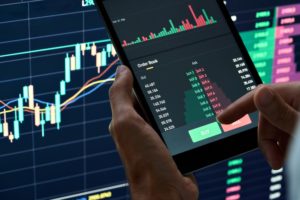Everyone is aware of the unpredictable and volatile nature of the cryptocurrency market. Because of this, it is quite challenging to properly navigate through it and make appropriate investment selections at the appropriate time.
Therefore, in order to be a profitable trader in cryptocurrencies, it is essential to devote some time and effort to gaining an understanding of bitcoin, the fluctuations in its price, and the tools that are currently available to traders to assist them in depicting the price movements of bitcoin in the future.
At this moment, the general feeling about cryptocurrencies is one of irrational and unreasonable dread. Because of this, aficionados are wondering if it is better to sell, hold, or acquire cryptocurrency. The Fear and Greed Index is a critical indicator that gives insight into market movements and mood, and it may assist in answering these questions by providing this information.
This guide article examines the ways in which investor attitude has an effect on the cryptocurrency market, as well as the ways in which the Fear and Greed Index may assist traders in making educated choices about their investments.
What is the Fear and Greed Index?
The Fear and Greed Index is a statistic indicator that gives insight into the general attitude of the bitcoin market. It compares two emotions: fear and greed. In order to evaluate if investors are experiencing fear or greed, it takes into consideration a number of different criteria, such as the volatility of the market, the volume of trade, and the emotion of social media.
The index is based on a scale that ranges from 0 to 100, with 0 representing severe fear and 100 representing excessive greed. The index is computed using this scale, and then interpretations are made based on the very same scale.
A score of 50 represents an apathetic attitude toward the topic. Traders and investors may use the Fear and Greed Index as a tool to get a better understanding of the present state of the market mood and to assist them in making educated choices about their bitcoin investments.
Traders are able to alter their tactics and make decisions on whether they should purchase, sell, or keep their assets depending on the mood of the market by watching the index.
The Fear and Greed Index has shown that values of the index that are exceptionally low are associated with a positive turnaround in cryptocurrency prices. Fear of experiencing a loss of wealth on the part of investors often leads to a panicked selling of their crypto assets, which in turn leads to additional price drops.
Since crypto assets are likely undervalued at the moment, experienced traders consider the current market situation as the best time to acquire crypto assets at a low price. The index is a solid predictor of price reversals in cryptocurrencies, with high levels of anxiety often preceding positive moves in the market.
On the other hand, the index implies that excessive greed, which is typically prompted by FOMO, signals that market prices are overbought, with crypto assets being overpriced. This is the opposite of what we saw before. Because of this, there is a possibility that the market bubble may collapse, and there is little incentive for investors to stay in the market.
When faced with such a situation, investors often decide to short the market or sell their shares. A negative trend, which indicates a decline in cryptocurrency values, is sometimes accompanied by extreme greed. Hence, keeping the two faces of the market this indicator tells traders about, the Fear and Greed Index is considered a reliable predictor of the emotion and price patterns of the cryptocurrency market.
Important Components of the Index
The Fear and Greed Index is a composite indicator that determines the current attitude of the cryptocurrency market by using a variety of data sources. This index is also known as the FGI. The following are examples of data sources that are commonly used in the process of calculating the index:
Market Volatility
Examining the day-to-day price fluctuations of a number of different cryptocurrencies allows one to determine the volatility of the market for cryptocurrencies. The occurrence of extreme fluctuations in the prices of cryptocurrencies, which indicates high volatility, can be interpreted as a manifestation of an uneasy market environment with a decreased willingness of investors to take risks. This interpretation is supported by the ideation that investors have been less willing to take risks in recent times.
On the other hand, a consistent rise in price over time is consistent with an increased level of safety. The Fear and Greed Index is a comprehensive, smart tool that is applied to measure the current degree of volatility by comparing it to the average values that have been recorded over the course of the preceding thirty and ninety days.
There is a possibility that excessive and strong volatility may have direct repercussions on the values of cryptocurrencies, which may then result in a series of consequences for traders and investors likewise.
Market Momentum
Analysis of the changing trading volume of cryptocurrencies over a period of time may be used to determine the momentum of the cryptocurrency market. The term “market momentum” refers to an indicator that measures the overall acceleration of the market and is used in the process of evaluating the prevalent market mood.
It is possible for it to move in either an upward or a downward trend, and swings in trade volume may further support either direction. When there are a lot of people trading in the market, the volume will be high and vice versa.
Calculating market momentum involves taking the current market volume and comparing it to the average values for the preceding 30 or 90 trading days. When the market is doing well, there is greater greed when there is a bigger number of purchases.
In addition to this, the put/call ratio may be used to analyze the volume of the market. In this formula, you will divide the entire number of short positions, which are called put options, by the total number of long positions, which are called call options (long positions).
If the outcome is more than one, then more people are buying put options, which suggests that the majority of market participants have a bearish outlook on the market (i.e., they expect prices to fall).
Social Media Sentiment
It is determined by analyzing the sentiment of social media postings connected to cryptocurrencies whether or not the overall sentiment is positive. The use of social media platforms as meeting places for people to talk about Bitcoin and other cryptocurrencies is widespread. A robust community that keeps a close eye on the market and provides responses to it in real time may be found on Twitter.
One may ascertain the present state of the market by counting the number of tweets that include particular hashtags that are associated with Bitcoin and examining the rate at which and the frequency with which people engage with posts that contain these hashtags within a given time period. In most cases, increasing greed may be deduced from increased interest as well as a rise in the number of encounters.
On the other hand, social media platforms also play a role in the development of a wide variety of pump-and-dump schemes. For instance, online articles may provide ostensibly significant information that motivates investors to acquire a certain crypto asset, so provoking investors’ fear of missing out (FOMO).
This tendency causes people to make hasty purchases without doing sufficient research, which in turn causes an artificial surge in the asset’s value and pumps the market to an extreme extent. The price of the asset will decrease dramatically when the manipulators who posted the information sell their shares, but only after they have done so.
After then, the manipulators buy the cryptocurrency asset once again when its price has dropped, and the cycle of pumping and dumping proceeds once more from that point.
Surveys
With the purpose of gaining a better comprehension of the present state of the market’s mood, surveys of market players such as traders, investors, and analysts are used. The opinions and viewpoints of cryptocurrency users and investors carry a large amount of weight and have a big influence on the fluctuations in the price of cryptocurrencies.
A rise in the index and an increase in the feeling of greed in the market might be caused by positive survey results.
Bitcoin Dominance
Bitcoin maintains its preeminent position in the cryptocurrency industry due to the fact that its market capitalization accounts for the largest proportion of the entire cryptocurrency market cap. This strong dominance of Bitcoin implies that the market is uncertain because investors have a tendency to move their assets from volatile altcoins into Bitcoin because they see Bitcoin as a safe haven asset that shields investors from a dramatic fall in prices.
Yet, when there is a greater emphasis on greed in the market, investors are more likely to put their money into riskier assets, such as other cryptocurrencies, in the hopes of achieving enormous profits. This trend contributes to Bitcoin’s diminishing market share.
Nevertheless, it is essential to keep in mind that the Crypto Fear and Greed Index takes into account just Bitcoin and does not take into account any other cryptocurrencies. The growth of stablecoins might draw investors as a safe haven asset, which could result in a low Bitcoin domination but a gloomy market mood overall since investors shun riskier crypto assets.
Importance of the Fear and Greed Index
The Fear and Greed Index is crucial for cryptocurrency traders in a number of ways, some of which are listed in the paragraphs ahead.
Cryptocurrency traders should pay attention to the Fear and Greed Index because it offers valuable information into the general attitude of the cryptocurrency market. Traders and investors who want to make educated judgments regarding their investments might benefit from this information to a certain extent.
Many investors consider FGI as a sneak peek into the market as it offers a glimpse into the mood of the market. The Fear and Greed Index is a contemporary tool that may be used to get insight into the present emotion of the market, namely whether it is dominated by fear or greed.
Traders will be able to make better-educated choices on when to purchase, sell, or keep their bitcoin assets as a result of this information. In addition to that, this indicator plays a part in assisting traders in locating possible purchasing opportunities.
When the Fear and Greed Index shows that there is an overwhelming amount of fear, this may give a buying opportunity for traders who are trying to acquire cryptocurrencies at a price that is lower than the current market price.
On the other hand, if the index is showing that investors are very greedy, this may be an indication that the market has been overbought and is ready for a correction. Therefore, it is rightly considered by many investors as a critical crypto analysis tool, and even a lot of traders rely on it to choose which crypto they invest next or which assets they are selling for the sake of their own safety.
In addition, investors have the ability to use this asset as a tool for risk management, which is highly essential when it comes to erratic economies, such as crypto. Traders are able to spot possible hazards in the market by watching the Fear and Greed Index, and they can then change their trading tactics in accordance with those risks.
For instance, in order for traders to effectively manage their risk, they can decide to minimize their exposure to the market if the index is showing signs of severe greed.
When taken as a whole, the Fear and Greed Index has the potential to be a useful instrument for cryptocurrency traders who are interested in making educated choices about their investments. Traders are able to successfully limit their risk and perhaps optimize their profits when they use it in combination with other sources of information and a well-defined trading strategy.
Limitations of the Fear and Greed Index
There are certain restrictions on how the Fear and Greed Index may be used, despite the fact that it can be a helpful tool for traders and investors to measure the general emotion of the market. The following paragraph is a list of the most significant restrictions imposed by the index.
The Fear and Greed Index is computed based on a limited number of data sources, which may not offer an accurate depiction of how investors feel about the market as a whole. You can’t really rely on a few data sources and make sound judgments for your future endeavors. This is why a lot of investors are skeptical about its reliability and accuracy.
Moreover, since the particular technique that is used to construct the Fear and Greed Index is not always visible, it may be difficult for traders to completely comprehend how the index is produced. Therefore, it is essential for traders to use the index in conjunction with other information sources in order to have a more holistic perspective of the market.
To add on, the Fear and Greed Index evaluates market performance based on historical data; however, there is no guarantee that previous data accurately predicts future results. Therefore, the use of historical data to predict future performance should be done with extreme caution.
As we know that the Fear and Greed Index is based on feelings such as fear and greed. It is pretty subjective and really difficult to measure. Traders should be wary of making judgments based entirely on their feelings and instead make use of the index in conjunction with objective fundamental and technical research.
In general, the Fear and Greed Index can provide valuable insights into market sentiment; however, it is important for traders to be aware of its limitations.
Conclusion
The Fear and Greed Index is really not a magic 8-ball that can forecast with absolute precision what the price of cryptocurrencies will be in the future. Instead, it gives a broad sense of how people feel about the market based on a number of different characteristics. Several fundamental and technical elements, in addition to market emotion, may also affect price fluctuations in the cryptocurrency market. Market sentiment can have a substantial effect on price changes.
Consequently, traders and investors should not base their trading choices exclusively on the Fear and Greed Index if they want to be successful. While making judgments on investments, it is essential to do extensive research, carefully examine current trends, and make use of a variety of different indicators and instruments.
Only that way you could build your path towards being a successful investor; relying on one tool is never a good idea and, therefore, never recommended by experts.







More Stories
Post Ethereum Merge: Grayscale Seeks More Time To Review ETHPoW Stance
Bitcoin Holds Strong As Banking Crisis Continues
A Major Travel Agency Company In LATAM Announces Adoption Of Cryptocurrencies